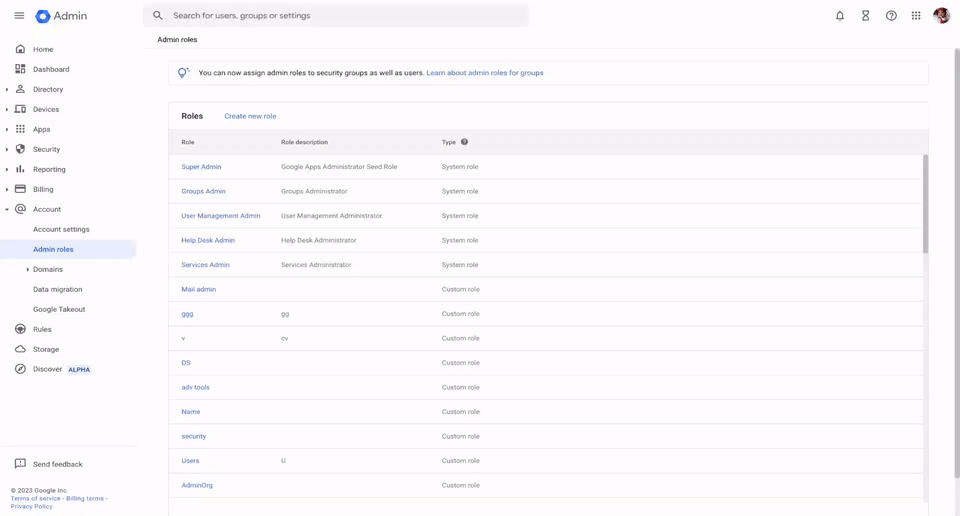What's changing
Currently, Google Groups has three roles: owner, manager, and member. Associated permissions for these roles, like Who can manage members and Who can view members can be configured in a group's settings. Additional group members can be assigned these permissions using custom roles. For example a group could have “who can manage members” set to “group owners” but then configure a custom role, add members to it, and add the custom role to “who can manage members.”
- Custom roles for Who can manage members and Who can view members
- The ability to allow the Entire organization to manage members
- Add new custom roles for Who can manage members and Who can view members
- Set Who can manage members to Entire organization
- If a group has custom roles configured for Who can manage members and Who can view members, those custom roles will no longer apply
- If a group has Who can manage members set to Entire organization, that setting will be updated to all members
- Recommended: Expand the setting for Who can manage members to owners and managers and add those three users as managers
- Change the role of those three members to owners
- Expand the capability to manage members to all group members
Getting started
- Admins: Admins of affected customers will receive more information via email, including a list of impacted Groups, to help their users navigate this change. Visit the Help Center for more information on the custom roles changes coming to Groups.
- End users: Owners and managers of impacted groups will see a banner notifying them of the change beginning July 2025. We recommend reviewing and adjusting your group settings ahead of this change. Visit the Help Center for more information on the custom roles changes coming to Groups.








